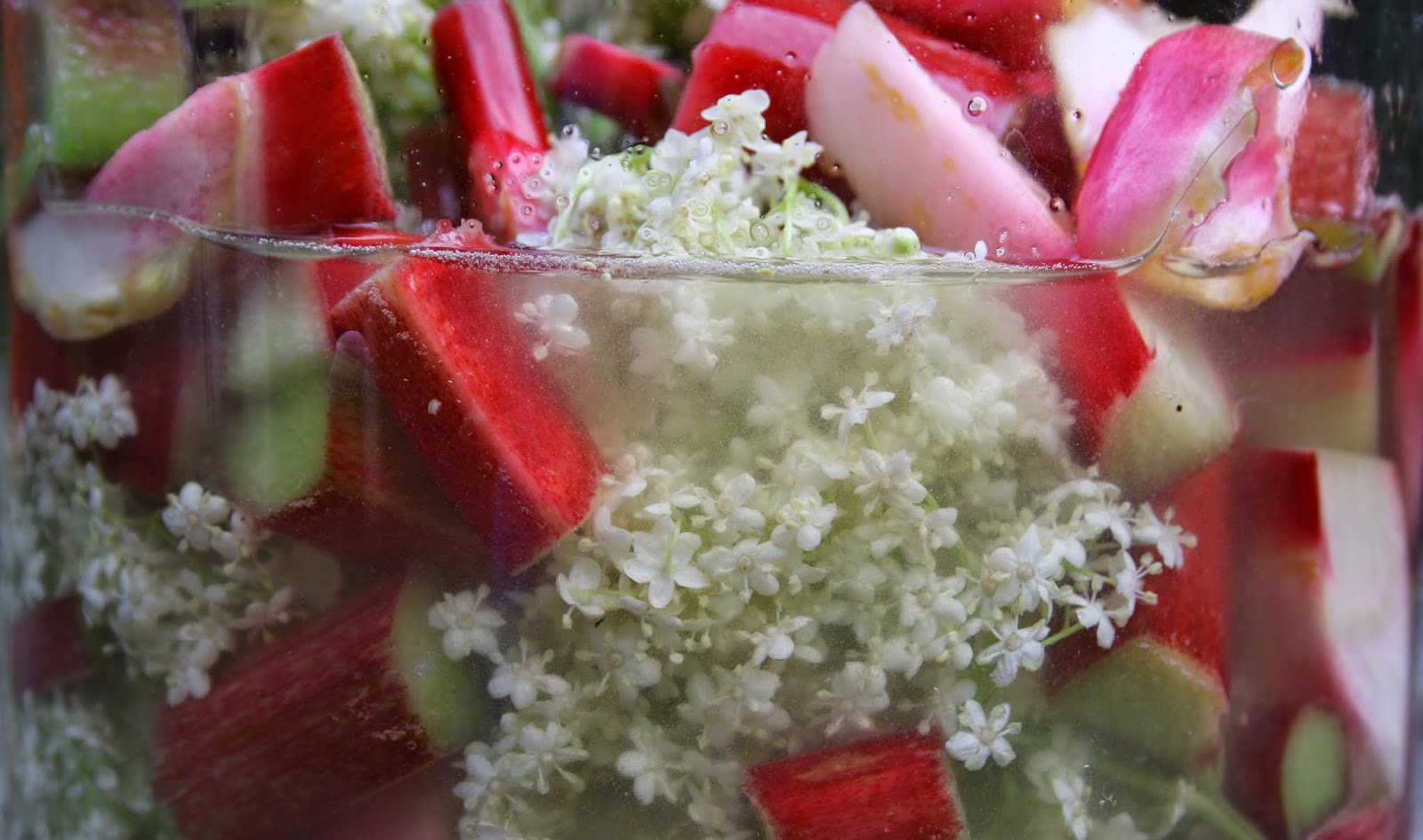Elderflowers form delicate galaxies of tiny stars which hang heavily from green stems of elder, gently perfuming the air with their heady scent. What you see (and smell and taste) is what you get.
Strange bedfellows these two. Yet mix them together with gin, sugar and lemon juice and a mysterious alchemy takes place. Wait a few weeks and a shiny golden-pink, sweetly floral liquor develops, as if by magic. You can discard the now brown and dull mangle of elderflower and rhubarb waste.
 |
| Macerate the rhubarb Place the elderflower in the jar Mix with sugar and gin |
i) Slice 12 sticks of cleaned pink rhubarb into 5cm lengths, and stir in 50g white sugar, leaving it to macerate for an hour.
ii) Collect 15 or so fresh, white elderflower heads (no brown or wilted flowers). Tap them to knock out ants and bugs (rinsing washes out the flavour); cut away leaves and larger stalks; then place the elderflowers in a sterilised, airtight jar.iii) Add the macerated rhubarb and sugar (+ all the juices) to the jar. Add 2 tbs of extra sugar and juice of a lemon, and cover with 1litre of gin.
iv) Seal and shake.
v) Store in a cool, dark place for two weeks, shaking every other day.
vi) Strain the liquid carefully, using a coffee filter or similar (there may be a sediment at the bottom which will otherwise cloud the eventual liquor); bottle and keep in a cool, dark place.
It is ready for use now, but goes on improving with time (two years on it is developing really interesting flavours and underlying caramel notes). A twist on the classic G and T is an easy way forward, but the colour and complex flavours demand more imaginative uses, in delicate, summery cocktails or long refreshing coolers. Served over ice with lemon juice and soda water works pretty well in tis hot weather, rather like an aperol spritz.

